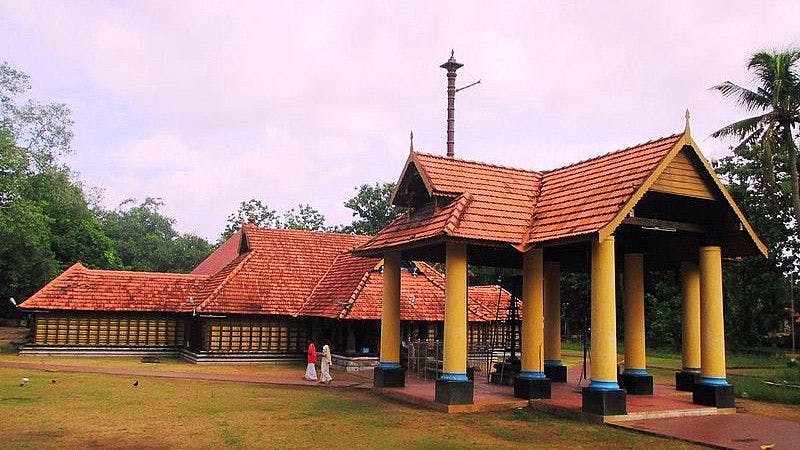Onam: Where Myth & History Meet
BOOKMARK
As Onam is celebrated in Kerala and in the diaspora, nowhere are the celebrations grander or more opulent than at the Thrikkakara Vamanamoorthy Temple near Kochi. Linked closely to the story of Onam and the myth that connects it to one of Vishnu’s Dashavataras or 10 incarnations, the Vamanamoorthy Temple is the place to be in, on Onam. In fact, located around 18 km from Kochi, this temple is one of the few Vishnu temples dedicated to his Vamana or dwarf avatar and is considered to be one of the 108 Divya Desams or the important temples of Vishnu in South India.
– Thrikkakara Vamanamoorthy Temple is dedicated to Vishnu in his Vamana or dwarf avatar
The temple is connected with the legend of King Mahabali. According to folklore, the site of the Thrikkakara temple was the abode of King Mahabali, the mythical king of the region and he used to worship at a Shiva temple here. The Bhagavata Purana, an important sacred text in Vaishnavism described the story of King Mahabali and how he became central to this story.
King Mahabali was well-known as a benevolent asura king who was also all-powerful. His lands were so peaceful and prosperous that it evoked the jealousy of Indra, the God of rain and thunder and also the lord of the heavens, who requested help from Lord Vishnu to defeat Mahabali.
– Vishnu blessed King Mahabali with immortality and allowed him to return every year to see his citizens
Lord Vishnu agreed to do so and took on the Vamana avatar – where he came down to earth as a dwarf Brahmin priest, to meet the King. He appeared in front of the King and requested three paces of land. King Mahabali consented, upon which Vamana took a gigantic form. His first two steps straddled the heaven and earth. Unable to fulfill his promise and with nowhere left for Lord Vishnu to take a step, the story goes that King Mahabali offered his head for the third. Vishnu, pleased with his humility, offered the King immortality. He was also allowed to return every year to see his citizens. That day when the King returns to his land, is celebrated as the Onam festival.
The exact origins of Vamanamoorthy Temple at Thrikkakara are not known. Around 18 stone inscriptions have been found at the temple, which date from 10th to 13th century CE. However, the original shrine could have been even older. It is generally traced to the reign of Chera kings who ruled Kerala from 9th to 12th century CE. The inscriptions at the temple describe the celebration of Onam as an occasion when all local chieftains assembled at Thrikkakara to pay their respect to the Kulasekhara Chakravarthi or the Chera king. The inscriptions tell us that unlike today, Onam was celebrated for 28 days in the past. The last 10 days saw celebrations peak. Onam which probably began as a harvest festival acquired religious significance over time.
– Unlike today, Onam was celebrated for 28 days in the past
However, the present temple structure of the Vamanamoorthy Temple at Thrikkakara is not very old. Over centuries, the temple at Thrikkakara went into decline and by the 1900s, it was in complete ruin. Only the central shrine remained and was in very bad shape. It was sometime in the early years of the 20th century, that the temple was rebuilt and restored by the State Archaeology Department and its administration was placed under the Travancore Devaswom Board, under whose management the temple remains till this day.
The grandest celebrations of Onam take place at the temple and are attended by thousands of people every year. The festivities begin with Kodiyettu or the flag hoisting which is a symbolic welcome of King Mahabali. A pyramidal statue symbolising Lord Vamana is installed and prayers are offered to it.
There are several intricate rituals in honour of Lord Vishnu. The Chaarthu is a form of the decoration of the idol of Lord Vamana using sandal paste ornaments and clothing. On each day, the central idol is decorated in the form of one of the 10 avatars or incarnations of Vishnu, like the Matsya (fish), Kurma (Tortoise), Varaha (boar), Narasimha (half-man half-lion), Trivkrama (another name of Lord Vamana), Parashurama, Rama, Balarama, Krishna and Kalki. The Pakalpooram is a grand procession on elephants which is held on the 9th day of the celebrations.
During the last two days, a grand Sadhya or ceremonial feast takes place at the temple. The festivities end on the 10th day, when the flag is lowered and when Lord Vamana is taken for his ritual bath, in an elephant procession, known as Aarattu. This marks the end of the grand Onam festivities.
– LHI TRAVEL GUIDE
The nearest railway station is Aluva, about 9 km away while the nearest airport is Cochin International Airport, about 15 km away










